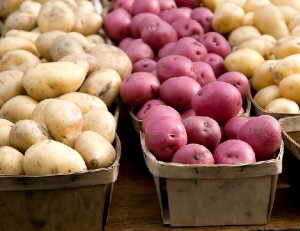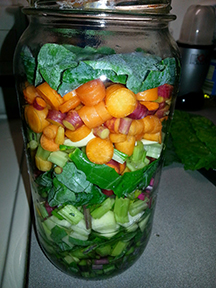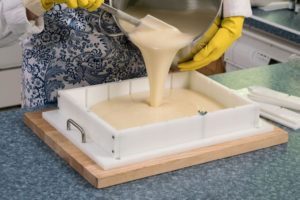 |
| Center, turkey carcass. Upper left, ginger bug, which is pulling the last flavor from ginger bits. At top right, the inset from my steam juicer. I was juicing fruit while the turkey carcass cooked. |
Doesn’t that just look delicious? And there was sooooo much meat left on that bird I almost made enchiladas. If you haven’t figured it out, I’m doing a step by step on how to make turkey broth powder :)
Step One: Obtain turkey carcass. Skin, bones, meat scrapings, basically what is left after the meal. This is the same process as one would use to make any other poultry broth, so don’t think you need to limit yourself to turkeys. (Beef is a bit different. The next time I do beef I’ll do a post about it too!)
Step Two: Put the carcass into a large enough slow cooker to cover it all with water. If there is grain-based stuffing, you want to remove that, but veggies, fruit and herbs are perfectly fine to leave in there. This is when you add any seasonings you want in there. I used garlic powder, mixed herbs and salt and pepper.
 BGirard cooks her turkey carcass and veggies in a slow cooker/roaster. But you can do it in a large foil-covered pan at a slow simmer on your stovetop if you don’t have a slow cooker/roaster. Or try a large lidded stockpot.
BGirard cooks her turkey carcass and veggies in a slow cooker/roaster. But you can do it in a large foil-covered pan at a slow simmer on your stovetop if you don’t have a slow cooker/roaster. Or try a large lidded stockpot.

Step Three: Add any vegetable left overs you have laying around/ in the freezer (you DO keep your vegetable leavings in the freezer, right? Everyone has that, right? I’m NOT weird, stop saying that).
Step Four: Add enough water to cover the whole shebang. If you’re using a slow cooker or a slow cooker/roaster, set that baby on high, go off to do other things for about 16 hours, just stir every now and then and at some point taste it.
Because you’re using a pre-cooked turkey carcass, you’re all set, food-safety-wise. Never use this process for a raw bird of any kind!
I do like to let it go for a bit so the flavours can mingle and get to know each other. This is what your re-constituted broth will taste like, so make it work for you. Here’s what you are looking to get:
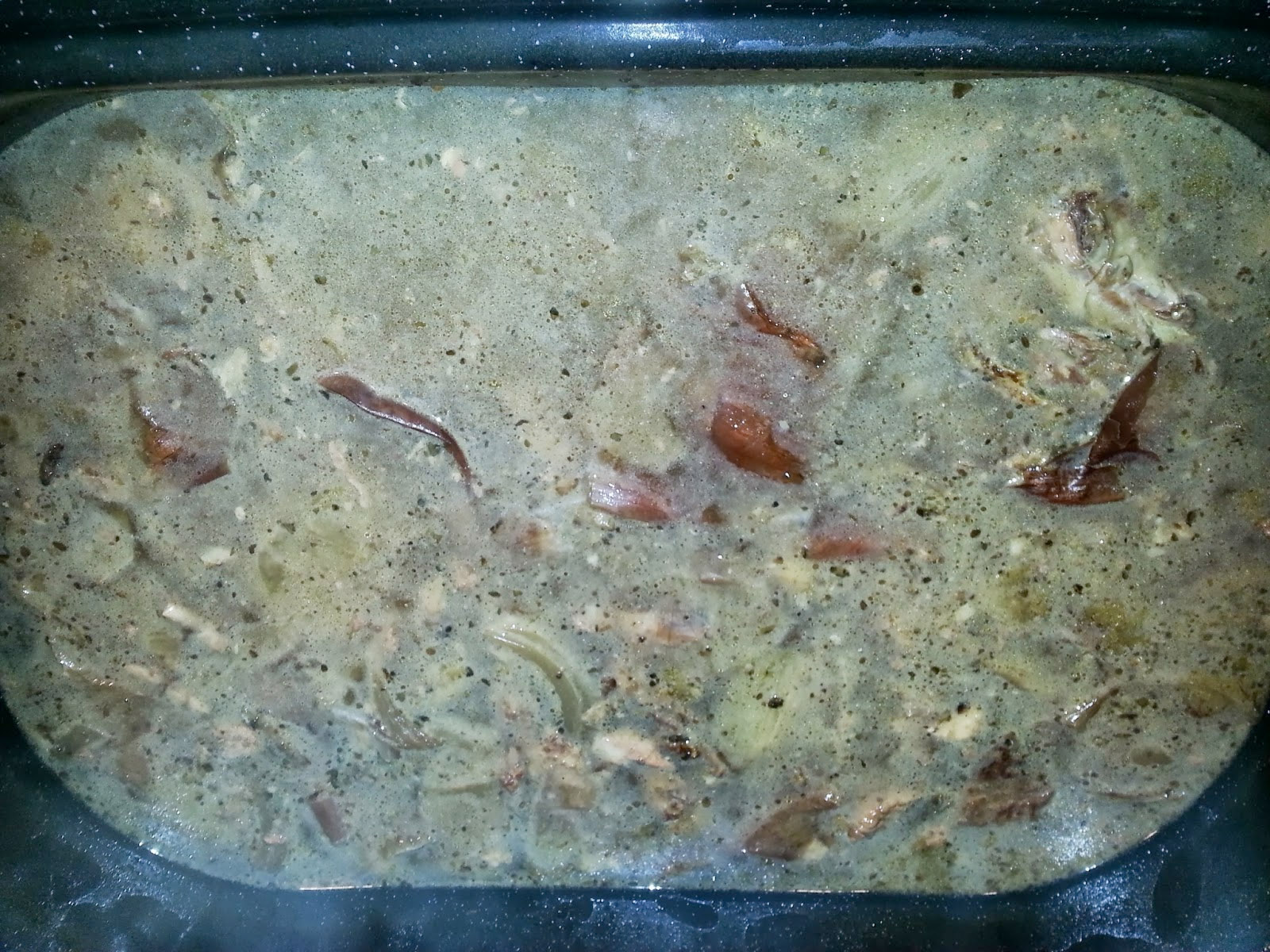 I wish I could take a picture of the smell, it’s simply divine.
I wish I could take a picture of the smell, it’s simply divine.
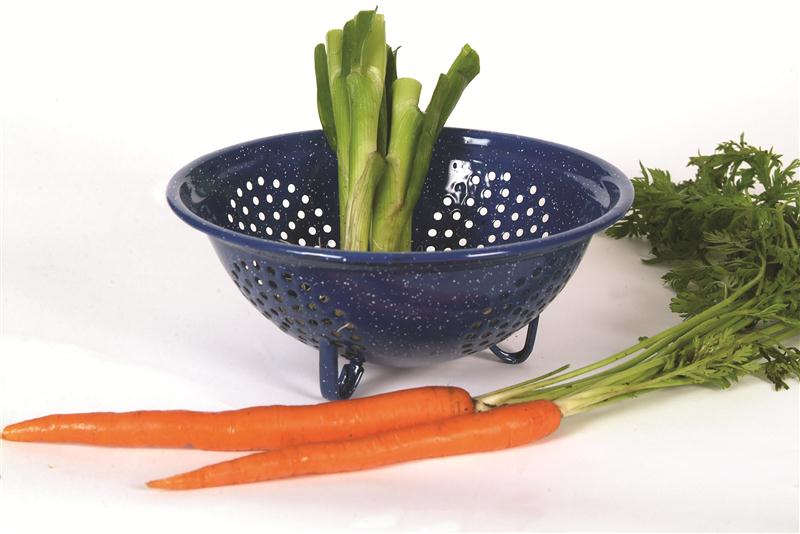
Step Five: Using a pot large enough to accommodate all of this, or several pots if you need to, strain the bones and vegetable matter out, pouring the liquid into the pot (or pots).
If you are canning this you will want to strain it much, much better than what I am doing here. Generally, you want a clearer broth to can.
Since I’m dehydrating, I just get the majority out, and don’t worry about some bits left in, as you can see, below center.
Step Six: Boil the strained stock. Then boil it some more. If you cannot do this outside, your kitchen will become a steam room/sauna, so make sure to wrap yourself in a towel and enjoy the experience. Here’s what you are looking to achieve:
Notice the lack of about 8 and a half quarts of liquid? Yes, my skin is baby soft and my entire house smells like turkey, thanks for asking! That’s about a cup of liquid, it’s noticeably thicker than water.
Step Seven: After that has cooled a bit, load the liquid on fruit leather trays for your dehydrator.
I set my dehydrator to 160 degrees F and let her go. Takes about a day and a half to dry out the concentrated stock.
Step Eight: you know your broth is completely dehydrated when you can do this:

What I’m doing here is simply pressing on the back of the roll up sheet and the dehydrated stock pops right off the front (or top) of the fruit leather tray. The thinner a layer of stock you originally load, the quicker your drying time. (If the broth sticks to the tray, it’s not done. Dehydrate a bit longer, and try the test again.)

Unload all of your trays and crush up the dried stock finely. If you feel so inclined, run them through a food processor or use a mortar and pestle to create powder.
Just be quick about it, this stuff WANTS water. As in, if you just LOOKED at the faucet it will stick to your fingers. You can just break it up small enough to fit your jar. Consistency does not affect the taste. However, the stock does re-constitute faster if powdered. And it’s easier to measure.
There you have it. Homemade, dried and powdered turkey stock. All ingredients that I know and can pronounce (but then, I speak German, so that’s probably a weird litmus) and lovely stuff I can use in my dried soup pre-mixes without worry.
I keep it in the fridge or freezer, because I keep it long-term. It’s perfectly fine in the pantry for at least three months. It does have trace fat in it and it’s a meat product, so some caution is advised, but it’s also pretty salty in this state, so if it smells good (and boy howdy, does it ever), it’s fine.
I also make a second brewing of the turkey carcass, with more vegetables and seasonings added, that’s the broth I freeze or can.
Aside from taking about 3 days to make, the dehydrated stock is easy to make, actually pretty low effort and cost me next to nothing. The carcass was free, and even if not, it’s using something that is a by-product of eating poultry, the vegetables are also by-products of something we already ate, the seasonings are pennies at best and the fuel is probably around $1.
So for a very generous estimate of $2 (no, I’m not going to figure out what the cost of the bones was by weight, because:
1. I don’t know what the turkey cost
2. I didn’t weigh the carcass
3. Even if I had bought the bird, I would have considered the entire weight as part of the meat and accounted for it that way, so in MY house bones are free, your mileage may vary)
Now, with just a little work and time invested, I have the equivalent of 2 jars of organic/preservative free (OK, salt, stickler, you) broth base. I’ll take it.
That’s all I got for now,
Happy Pinching!




